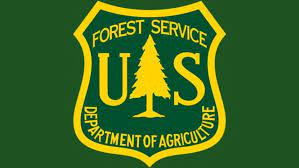Forest Service discusses Northwest’s wildfire crisis during online community forum

PORTLAND, Ore. (KTVZ) — The USDA Forest Service held an online community forum recently to address the wildfire crisis facing the Pacific Northwest.
Glenn Casamassa, the Forest Service's Regional Forester for the Pacific Northwest, spoke at the Feb. 16 forum and emphasized the importance of mitigating wildfire risk to communities. He explained that the wildfire challenge in the Northwest is largely due to changing weather patterns caused by climate change.
“We're experiencing less predictable weather — changing rain and snow patterns, less snowpack, intense heat waves, and really a significant amount of persistent drought,” Casamassa said. “Even with the rain and snow we've had so far this winter, about 64% of Oregon continues to experience drought conditions and we know that overall, one winter of good heavy snowpack is not necessarily going to help us recover from really the persistent drought we've experienced over the past few years.”
Drought weakens the forest and makes it more susceptible to outbreaks of invasive insects and disease. Combine this with hot summers, unpredictable lightning and windstorms, and overcrowded forests littered with dead and dying trees, branches, and fallen trees, and the conditions for wildfires are set.
To reduce the risk and restore healthy forests to the landscapes, the Forest Service is working closely with other federal and non-federal entities and allocating a historic level of resources and funds to confront the crisis.
Shasta Ferranto, the leader of the Forest Service's wildfire crisis team in the Pacific Northwest Region, joined the forum to discuss the agency's efforts to confront the crisis throughout Oregon and Washington.
“This strategy focuses our efforts on the places where it’ll do the most good and the most quickly to protect communities from wildfire exposure,” said Ferranto.
In the Pacific Northwest, five landscapes are being prioritized for investments. In Washington state, they include the Northeast Washington landscape on the Colville National Forest and the central Washington initiative on the Okanagan-Wenatchee National Forest. In Oregon, they include the Central Oregon landscape on the Deschutes National Forest, the landscape around the Mount Hood National Forest, and the Klamath River Basin landscape, which includes portions of the Fremont-Winema National Forest in Oregon as well as several California forests.
“These five landscapes are and will continue to receive significant funding and resources over the next 10 years, with a goal of changing the trajectory of the wildfire crisis across them,” Ferranto said.
Ferranto emphasized that these are not the only places where fuel treatments and wildfire risk reduction work is taking place and that the Forest Service is working across the region to apply different tools where they will be most effective.
She highlighted various partnerships with state, local, and private partners to address wildfire risks in high-risk fire sheds, such as the Ashland Forest Resiliency Project in southwest Oregon. Additionally, she said, the Forest Service is providing grants to Oregon and Washington state to provide technical assistance and forestry expertise to private landowners and homeowners.
Ferranto stressed the importance of collaboration with partners and communities to address the wildfire crisis and emphasized the need to develop commercial uses and markets for small diameter timber and biomass, which can be used for wood energy, biochar production, and other purposes.
Alex Robertson, the director of Fire and Aviation Management for the Forest Service’s Pacific Northwest and Alaska Regions, also spoke at the forum about the Forest Service's prescribed burn program. He highlighted the importance of reducing combustible material in forests to lower the intensity of wildfires and assist firefighters in protecting communities, property, and infrastructure.
Robertson also talked about how the Forest Service places a great emphasis on managing smoke from prescribed fires to avoid adverse impacts to communities, minimize public health impacts, and reduce smoke impacts to visibility on roadways.
“Federal prescribed fire plans must identify smoke sensitive areas,” he said. Those include population centers, recreation areas, hospitals, airports, transportation corridors, schools, and more. “Many prescribed fires are postponed due to poor forecasted smoke dispersion or wind direction and speeds which don't meet planned avoidance or smoke sensitive areas,” Robertson said.
Even with the challenges of managing for smoke and other key factors, professional firefighters know the importance of the work. “Every year we see where fuels treatments have made a difference, whether it's by reducing fire risk to a nearby community or slowing fire growth of an advancing wildfire,” said Robertson. “We need your support to continue this important work.”
Ferranto added, “The bottom line is we live in a fire-prone landscape here in the Pacific Northwest. Our environment depends on frequent small fires to keep the mega fires away."
To view a recording of the online community forum, visit https://vimeo.com/799723954.